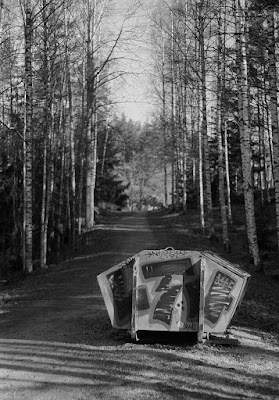You might remember that last winter I went through a film phase - I shot a lot of film, using several film cameras. Back then I offered reviews of those cameras, but now I realize I forgot something quite crucial: There was never a review of the films I used!
Today's article compares several types of black and white film, trying to find "the best BW film" for the enthusiast photographer. Remember, that my best is not necessarily your best. As always, I point out details that can be known only through experience, and then it is up to you to decide what you value the most. Let's face it, all the films listed below are pretty darn good films, and can yield excellent results. At the same time, I did discover differences that might or might not be important to you. So, read on!
Disclaimer: as with all Amateur Nikon reviews, I focus on shooting experience. If you're expecting some chemical analysis of the film emulsion or lab results, you're not searching for a photography review, but for a chemistry one.
(All films were processed with ID-11 developer following the manufacturers' instructions regarding temperatures and times. I also did experiment with other times - these are mentioned separately along the text, where applicable)
1. Kodak T-Max 100
This is one of the most popular black & white films out there, and for a very good reason. I must say it right away: in terms of absolute performance, this might be my favorite of the whole bunch.
+ incredibly sharp and contrasty when exposured properly
+ very fine grain, totally unobtrusive
- although it has plenty of exposure latitude, performance drops.
- it didn't react as well as I would have wished in "abusive development" (inaccurate temperature, lax timings)
2. Ilford FP4 Plus
Another popular film - by a popular brand. Again, I'll say it right away: I wasn't too thrilled.
+ cheap, easy-to-find all-around film
+ responds very well to overexposure
- performance was only OK (at least for general shots outdoors); not as contrasty as the Kodak
- more visible grain than what I would've expected.
3. Ilford HP5 Plus
We're at ISO 400 now. You probably expect that that means more latitude in shooting handheld and/or indoors, at the price of increased noise, correct? Well...
+ very good, balanced performance. Good sharpness/contrast, without much grain.
+ responds superbly to under/overexposure
- I discovered that it required longer fixing & washing times than other films.
- perhaps a coincidence, but on two separate occasions the film was damaged as I inserted it into the developing reel. Maybe thinner than others?
4. Ilford Delta Professional 3200
Another classic one, but classic doesn't mean all-around.
+ when lights go down, this is your film. Nominal ISO 3200, you can push it even higher if needed.
+ if you shoot sports and need insanely high shutter speeds, again, this is your film
- what do you expect? grainy (although not as much as what you'd think, particularly if well exposed), lower performance, and no, you can't shoot @ f/1.4 in bright sunlight.
- expensive
5. Fomapan Classic 100
The outsider. It's maybe less known than the rest, but it's reasonably well known.
+ cheap, good all-around film
+ very good general performance
- like the HP5, I discovered it needs longer fixing & washing (otherwise it leaves a lot of traces)
- grainier than I'd expect
Final Words
As I said before: you can't go wrong with any of them (well... don't shoot the Ilford Delta in bright sunlight; it's pointless). It all boils down to your personal needs. Do you value flexibility in shooting and developing? Pick the Ilford HP5. Are you after total performance? Get the Kodak T-Max 100. Do you need to shoot in very low light? The Ilford Delta is unbeatable.
Finally, here are some example shots (all developed with recommended temp/time):




No comments:
Post a Comment